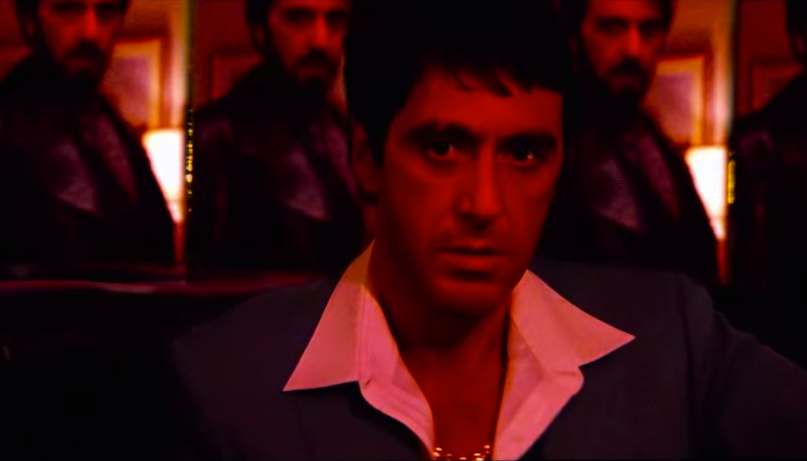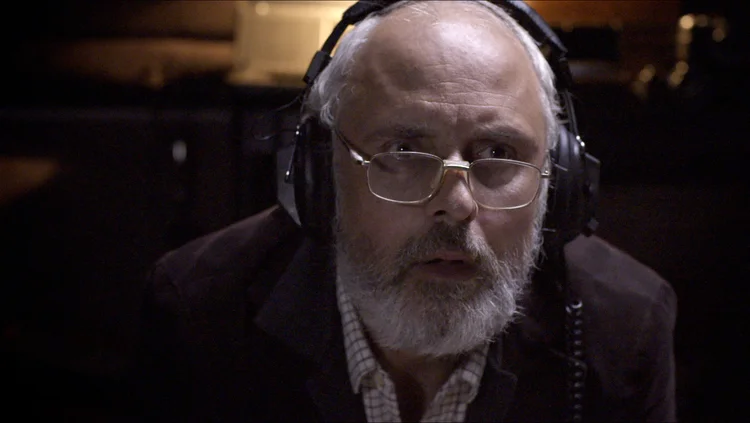We take a closer look at the great soundtracks behind Hunger (2008), American Graffiti (1973) and Das Boot (1981)
Read MoreDesigned For Sound | March 16
“Every week we highlight a movie with outstanding sound, whether that’s for it’s importance to cinematic history, it’s creative use of sound or the sheer audio enjoyment factor of the film.”
Raging Bull (1980)
© 1980 MGM
Raging Bull got Robert De Niro his only Oscar win in a leading role. His portrayal of real-life boxer Jake Lamotta - for which he famously gained 60 pounds (27kg) in the space of four months - is often described as one of the best performances of all time, and rightly so.
Hollywood sound effects legend Frank Warner was in charge of the soundtrack on this one. He used a plethora of powerful sound recordings such as animal screams interspersed in the fight scenes, gun shots instead of camera flashes, random bass drums, and a good dose of (here it is again) silence, to give the story all its emotional depth. Frank then went on to destroy, as he always did, all his original recordings as a form of respect towards the film and towards his work, so that he wouldn't re-use material on future projects. A bold resolution for a bold film about a bold character.
Wall-E (2008)
© 2008 Disney/PIXAR
Animated films are ideal grounds for sound to flourish, and science fiction is the perfect genre for cool sound design. Sound wizard Ben Burtt had just finished working on Star Wars III and famously told his family he would never do another robots movie again, but the opportunity to be involved early in pre-production is so rare in sound that he couldn't resist the temptation. He was hired by Pixar as their first ever in-house sound designer and worked on Wall-E over a span of three years.
The main characters voices alone took a solid nine months to create. Burtt would develop his sonic ideas and run them periodically by director Andrew Stanton. Each sound was discussed and refined as the animation took shape. He ended up creating 2600 new sounds - that's two and a half times more than your average Star Wars movie, to give you an idea of the task at hand.
Wall-E is a gem for film sound lovers in many ways. Our favourite fact is that for the first 30 minutes, the story is driven by sound and some music. The first machine to machine conversation occurs at 22 minutes and the first human dialogue at a staggering 39 minutes. A real treat for the senses.
Les Triplettes de Belleville (2003)
© 2003 Sony Pictures Entertainment, Inc
Quite possibly our all-time favourite, and one that has virtually no dialogue. The Triplettes of Belleville (as it is known in English) tells the story of Madame Souza and her dog Bruno, as they team up with the Belleville Sisters trio to rescue her grandson Champion, who has been kidnapped by a criminal gang during a mountain stage of the Tour de France.
In The Triplettes all is communicated through sound. Every squeak, creak, grunt, bark and wonky mechanism has been carefully selected and musically arranged in the audio visual canvas by director Sylvain Chomet and his sound team. So much that one of the best musical moments is in fact a piece entirely made from sounds; when Mme Souza and the Triplettes play at a club in New York using a newspaper, a fridge, a hoover and the spokes of a wheel to create a really funky tune. It is precisely the lack of dialogues that makes this film so enjoyable and immersive.
Your senses are constantly involved in reading the messages and following the story. Added to this is the beautifully imperfect style of the animation. All in all a very engaging surrealist film that you'll remember forever.
Designed For Sound | February 16
“Every week we highlight a movie with outstanding sound, whether that’s for it’s importance to cinematic history, it’s creative use of sound or the sheer audio enjoyment factor of the film. Some might be obvious but we’ll be unearthing hidden gems too.”
The Conversation (1974)
© 2003 Paramount Pictures
We kicked off February with one of the finest Hollywood thrillers of the 70s: The Conversation (1974) - written, directed and produced by Francis Ford Coppola.
It won the Palme D'Or in Cannes that year and only lost the 1975 Best Picture and Best Writing Oscars to The Godfather Part II, the other Coppola movie in contention in that year. The film follows the life of surveillance expert and lone wolf Harry Caul (Gene Hackman), in his attempts to solve an assignment he is working on. Its about social detachment; the increasingly relevant issue of surveillance in modern societies; and its about really listening as opposed to just hearing. All throughout the movie sound is used as a running commentary on what is going on in the mind of our secretive and increasingly isolated character. Sound is so central to this movie in many layers that we could consider it a character. Without giving anything away, the whole movie revolves around one line of dialogue that sound genius Walter Murch captured on set whilst recording wild tracks for post production. The Conversation is a brilliant example of the power that sound has in influencing what we see.
Barton Fink (1991)
© Twentieth Century Fox
The Cohen brothers are releasing this month. Hail, Caesar! starring George Clooney was opening the 66th Berlinale yesterday. This week's #DesignedForSound movie is Barton Fink (1991). Outstanding at storytelling, the Cohens have understood and exploited the subtle power of sound as a narrative device like very few director/writers in history. They also strongly believe in early collaboration with and between their music and sound departments, something unfortunately rare in the fast-paced budget-ridden film industry. Barton Fink is about a playwright who suffers a creative impasse as he moves from New York to California to write for the movies. His naivety combined with a failure to understand people and be understood drive the events. The whole film is presented through his perspective and therefore all we see and hear is rarely what is expected and often something deeper. Composer Carter Burwell and Supervising Sound Editor Skip Lievsay sat down and spotted the film together. Scene by scene they discussed who would take care of what and how. They came up with a scheme where they would share the frequency spectrum so if sound was focusing on lower/bassy content the music would play higher notes and so on. The result is a faultless, smooth, coherent and interesting soundtrack, and a massively entertaining film.
No Country For Old Men (2007)
We continue with the Cohen's because their work ethic is exemplary. No Country For Old Men (2007) - easily on our top 10 favourite films. So much to say about this flick so we'll (try and) keep it simple. Based on the book of the same name by Cormack McCarthy, NCFOM is a crime thriller/ drama/ western/ horror/ comedy/ noir/ road trip/ Cohens-style movie, set in the arid Texan borderlands. A drug deal gone wrong leaves a stash of cash that sets off a triangular chase between a Vietnam war veteran that finds it (Brolin), a mightily scary hitman (Bardem) and a soon-to-be retired sheriff (Jones). The soundtrack to NCFOM is an exercise in restraint. All the elements from Foley to backgrounds, to fx, to dialogues are dancing around moments of silence. There are a mere 11 minutes of composed music, so subliminal (drones from tibetan singing bowls) that you barely notice it. Suspenseful, incredibly dynamic, sparse and rich in detail, the mix is a pleasure ride to the ears. There isn't much dialogue either but it's sharp, full of meaning and delivered with strong accents -very Cohens. Not a wasted or boring scene here. From the opening voice over, delivered in deep rugged texan by Tommy Lee Jones, layered upon shots of deserted landscapes and dry whispy winds, you know it's going to be a good one.
Designed For Sound | January 2016
“Every week we highlight a movie with outstanding sound, whether that’s for it’s importance to cinematic history, it’s creative use of sound or the sheer audio enjoyment factor of the film. Some might be obvious but we’ll be unearthing hidden gems too.”
Star Wars (1977)
© LucasFilm.Ltd
We begin in a galaxy far away with a title that has it all: the essential and very on trend Star Wars saga. Episode IV - A New Hope (1977) was the first film to be screened in 5.1 surround sound - I can only imagine the experience of being immersed in this world back in the 70s! The vast yet coherent audio universe created by sound designer Ben Burtt is a work of epic proportions that has transcended into Western pop culture like no other movie to date. So thank you Mr Burtt and Mr Lucas. And if you still haven't been to see The Force Awakens at the pictures, you won't be disappointed... Just make sure your cinema has Dolby Atmos sound ;)
Elephant (2003)
© 2003 New Line Cinema
Written, directed and edited by Gus Van Sant.
The film is a dramatic reconstruction of the tragic 1999 massacre at Columbine High School, as seen from the student's and perpetrator's view alike. It's one of those films where sound really tells half the story - but does it in a very unconventional way. Long tracking shots slowly follow the characters as they make their way through the school. What you hear is not always what you see. Without really noticing it, that juxtaposition between what the images are depicting and what the sound is telling you slowly takes shape, blowing the cinematic experience to another level. The wizard behind it all is sound designer Leslie Shatz, who following Van Sant's guidance cut in some of Hildegard Westerkamp's beautiful soundscapes, giving them and the film a whole new life.
Once Upon A Time In The West (1968)
© 1968 Paramount Pictures
A Western classic. Sergio Leone shot this after the successful "Dollars" trilogy, at the apex of his career and backed by a Hollywood studio. It's an epic story written by the brightest minds of Italian cinema at the time (Leone, Bertolucci, Argento...), complete with Morricone score and Delli Colli cinematography. The opening ten minutes sequence is entirely scripted for sound. The actual quality of the sound effects may be crude for today's standards but the way they are placed and used is an absolute masterclass in film sound and storytelling. It is no coincidence that the Scorseses, Tarantinos and Lucas of this world all cite this movie as an influence.
C'era una volta il West (original title) opening sequence via https://vimeo.com/pablovalverdebranas
Sound's Big Moment
“There is no terror in the bang. Only in the anticipation of it.”
Following on from last weekend at Frightfest, we’ve been deep in the zone of all things scary. And is there anything scarier than a great suspense moment? I’m definitely with Alfred on this one, that the actual blood-gore isn’t half as impacting as simply feeling the anticipation.
Very few people are aware of sound in a film. Even to Directors and Producers, we as Sound Designers are often given little credit and our input can be seen as ‘necessary’ rather than be viewed as an artistic element in it’s own right. Of course there are amazing directors such as the Cohen brothers, who hold their sound departments in high-esteem, but it’s a sad fact that they are a rarity. Rarer still is an audience that identifies sound as a reason they found something moving.
That is, until, you come across a great suspense scene. Suspense moments are sound’s ‘big money shot’. Of course a subtle sound tapestry may be just as important to a film, but a lead-up to a big boom moment is the sound man’s moment in the spotlight. It may be the only point in a movie that the audience is actually aware of your work at all.
Because of this, I always get a kick out of working on suspense and thriller movies, and I’m going to try and make it a focus of mine to study them in more detail- to try and analyse what makes some work amazingly, and others not so much.
Here are some of my favourite examples of sound putting the fright into a scene…
(Spoiler Alert - if you haven't seen these movies, get on the case!)
1. Jurassic Park (1993) is riddled with sound moments. This is probably the most famous one.
2. War of the Worlds (2005) - Alien Probing Basement
3. The Silence of the Lambs (1991) - Night Vision
4. No Country for Old Men (2007) - Eagle Hotel Scene. Another sound gem of a movie.
5. The Birds (1963) - Gas Station Explosion. Classic Hitchcock
A big reason as to why sound is so important in these scenes, is because the visuals often become static or slow down. And isn’t that how it is in real life when you panic? What you can see becomes less important, as you’re mentally running other images of possible outcomes through your mind, your other more animalistic senses kick in- namely sound and smell. Like a dog who senses danger, he becomes stationary, his ears prick up and he stands to attention ready to see if it’s fight or flight time. In the anticipation, movement becomes less important and sound is relied upon to judge what is happening.
Do you have a favourite suspense scene? Have you been working on something with a lot of tension in it lately? We recently worked on The Quiet Hour, to which suspense and a sense of waiting is pivotal. It’ll be shown in London’s Soho next month. Congrats Stéphanie & Sean (and all the team) for the Raindance nomination also!
Hope you're having a great weekend- here's some cool Sound stuff to check out...


















